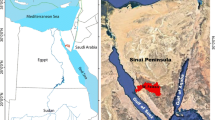Abstract
Water environmental planning and management has become essential for guiding the water pollution control activities. Past water pollution control activities have been site specific, with little thought on water quality standard reaching at the watershed scale. Based on the watershed approach, a seven-step methodological framework for water environmental planning and management was developed. The framework was applied to water environmental planning and management of the Lake Qilu watershed in Yunnan Province, China. Results show that the reduction amount of total nitrogen (TN) under the plan is 1,205 tons per year so that the target of environmental capacity can be reached in 2020. Compared with traditional methods, the framework has its prevalence and could be generalized to analogous watersheds.
Similar content being viewed by others
References
State Environmental Protection Administration (SEPA) of China. Environmental Quality Standards for Surface Water (GB3838-2002). Beijing: China Environmental Science Press, 2003, 9 (in Chinese)
State Environmental Protection Administration (SEPA) of China. Report on the State of the Environment in China 2005. 2006, http://www.sepa.gov.cn/plan/zkgb/05hjgb/ (in Chinese)
Liu Y, Guo H C, Zhou F, Wang L J, Zhang X M, He B. Watershed approach as a framework for lake-watershed pollution control. Acta Scientiae Circumstantiae, 2006, 26(2): 337–344 (in Chinese)
Huang K, Liu Y, Guo H C, Wang J F. The framework and it s application of water environmental planning for the small watershed. Research of Environmental Science, 2006, 19(5): 136–141 (in Chinese)
United States Environmental Protection Agency (USEPA). Moving the NPDES program to a watershed approach. 1994, http://www.epa.gov/npdes/pubs/ owm0148.pdf
Brady D J. The watershed protection approach. Water Science and Technology, 1996, 33(4–5): 17–21
Westervelt J D. Simulation Modeling for Watershed Management. New York: Springer, 2001
Kershner J L. Setting riparian/aquatic restoration objectives within a watershed context. Restoration Ecology, 1997, 5(4s): 15–24
Bohn B A, Kershner J L. Establishing aquatic restoration priorities using a watershed approach. Journal of Environmental Management, 2002, 64(4): 355–363
National Research Council. New Strategies for America’s Watersheds. Washington D. C.: National Academy Press, 1999, 1–36
Deng H B, Wang Q L, Cai Q H. Watershed ecology-new discipline, new idea and new approach. Chinese Journal of Applied Ecology, 1998, 9(4): 423–427 (in Chinese)
Montgomery D R, Grant G E, Sullivan K. Watershed analysis as a framework for implementing ecosystem management. Water Resources Bulletin, 1995, 31(3): 369–386
United States Environmental Protection Agency (USEPA). Watershed Analysis and Management (WAM) Guide for States and Communities. Washington, DC: United States Environmental Protection Agency (USEPA), 2003
Guo H C, Liu Y, He B. Typical Cases of Watershed Environmental Planning. Beijing: Peking University Press, 2007 (in Chinese)
Ma S W, Yang W L, Fang J H, Wang J Y. Study on dynamic change features of key pollutants in Qilu Lake. Yunnan Environmental Science, 1999, 18(1): 20–22 (in Chinese)
Dai Y L, Guo H C, Liu Y, Hao M J, Zhang M. Analysis of strategy for social-economic development in urban new economic development zones. China Environmental Science, 2004, 24(5): 627–631 (in Chinese)
Chapra S C. Surface Water-Quality Modeling. New York: McGraw-Hill, 1997, 534–558
Institute of Environment and Lake of Yunnan University, College of Environmental Sciences of Peking University. Water Pollution Integrated Control Planning for Lake Qilu Watershed. Kunming, China: Institute of Environment and Lake of Yunnan University, 2005 (in Chinese)
Author information
Authors and Affiliations
Corresponding author
Rights and permissions
About this article
Cite this article
Huang, K., Guo, H., Liu, Y. et al. Water environmental planning and management at the watershed scale: A case study of Lake Qilu, China. Front. Environ. Sci. Eng. China 2, 157–162 (2008). https://doi.org/10.1007/s11783-008-0011-2
Received:
Accepted:
Published:
Issue Date:
DOI: https://doi.org/10.1007/s11783-008-0011-2




